|
|

Your download link is at the very bottom of the page... always. |
Processed through Paypal No account required. |
Buy our over-priced crap to help keep things running.

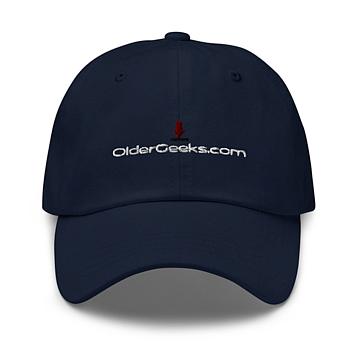








|
|

Your download link is at the very bottom of the page... always. |
Processed through Paypal No account required. |










| File - Download MeshLab v2020.07 | ||||||||
| Description | ||||||||
|
A plea... Deanna and I have been running this site since 2008 and lately we're seeing a big increase in users (and cost) but a decline in percentage of users who donate. Our ad-free and junkware-free download site only works if everyone chips in to offset the revenue that ads on other sites bring in. Please donate at the bottom of the page. Every little bit helps. Thank you so much. Sincerely, your Older Geeks: Randy and Deanna Always scroll to the bottom of the page for the main download link. We don't believe in fake/misleading download buttons and tricks. The link is always in the same place. MeshLab v2020.07 The open source system for processing and editing 3D triangular meshes. It provides a set of tools for editing, cleaning, healing, inspecting, rendering, texturing and converting meshes. It offers features for processing raw data produced by 3D digitization tools/devices and for preparing models for 3D printing.  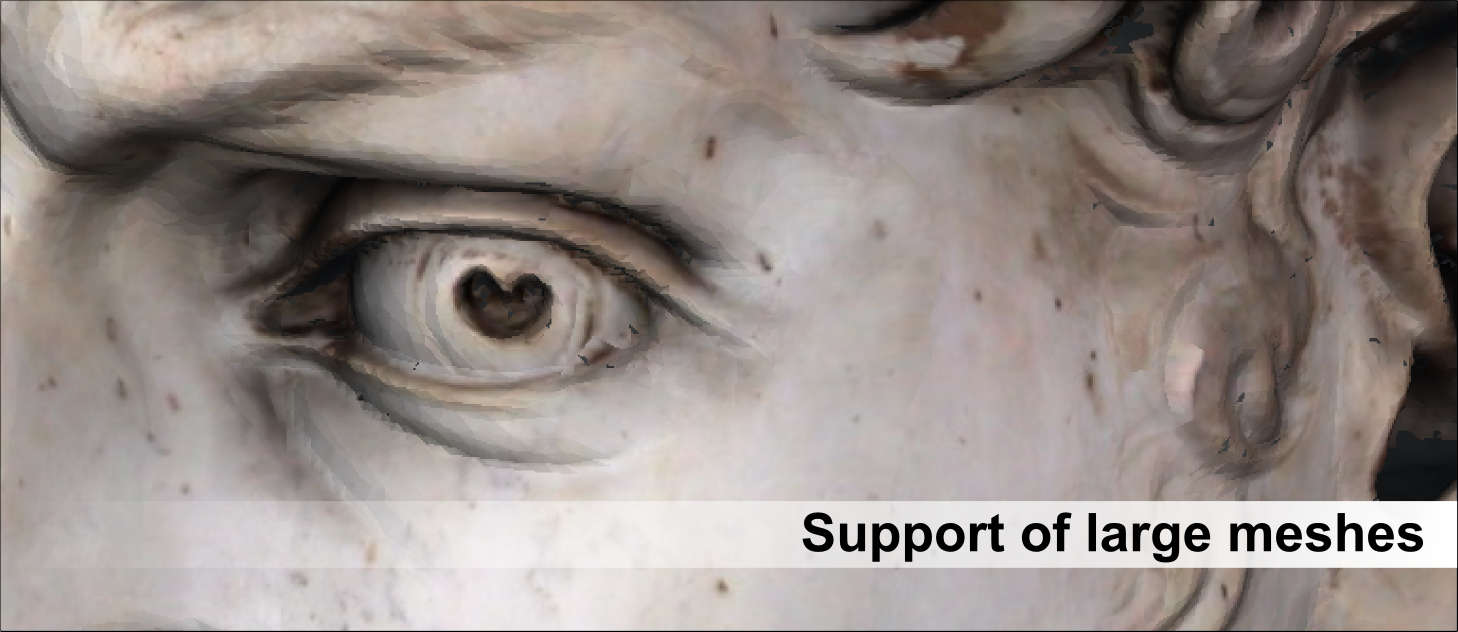     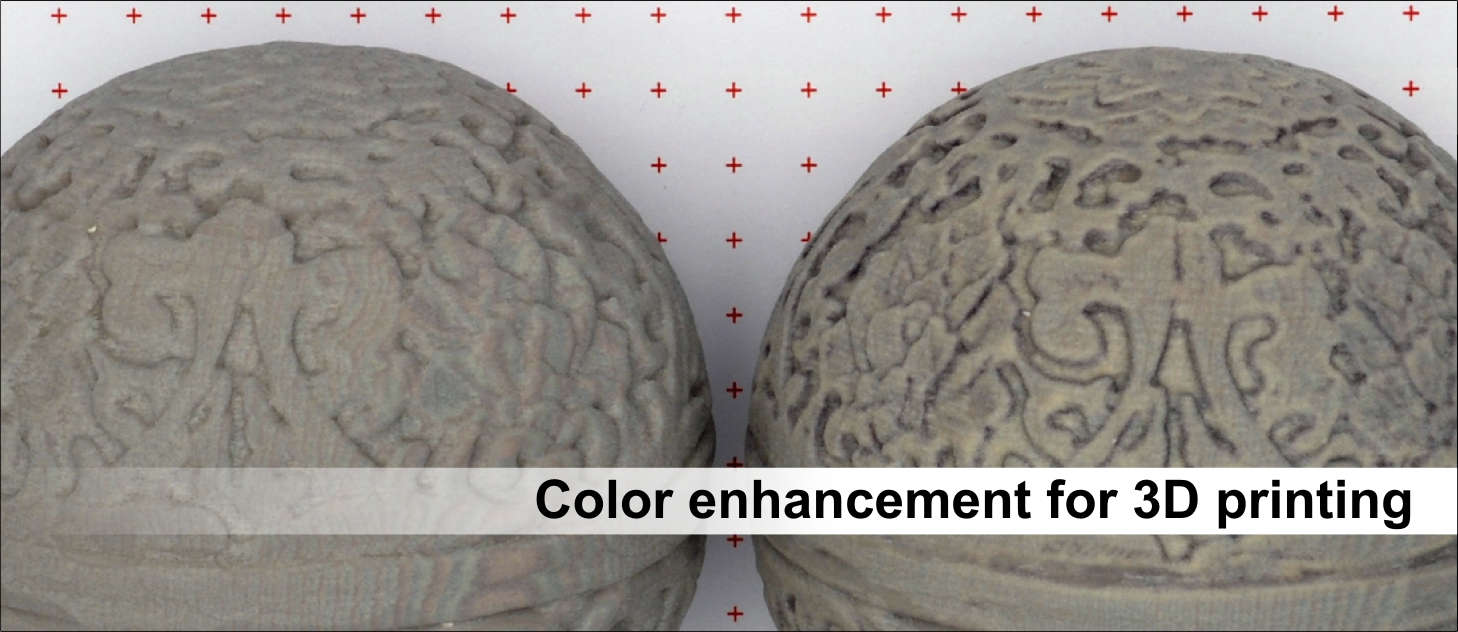        3D Acquisition: Aligning The 3D data alignment phase (also known as registration) is a fundamental step in the pipeline for processing 3D scanned data. MeshLab provides a powerful tool for moving the different meshes into a common reference system, able to manage large set of range-maps. MeshLab implements a fine tuned ICP one-to-one alignment step, followed by a global bundle adjustment error-distribution step. The alignment can be performed on meshes and point clouds coming from several sources, including active (both short- and long-range) scanners and 3D-from-image tools.  Visualization and Presentation The visualization features of MeshLab (including Decorators and Shaders) can help in graphically present the peculiar characteristics of a 3D model. It is possible to control the camera perspective/orthographic view parameters, and use predefined canonical views. MeshLab also offers a high-resolution screenshot feature, extremely useful in creating a graphical documentation of a survey.  3D Acquisition: Reconstruction The process of transforming independent acquisitions, or point clouds, into a single-surface triangulated mesh can be fulfilled with different algorithmic approaches. MeshLab provides several solutions to reconstruct the shape of an object, ranging from volumetric (Marching Cube) to implicit surfaces (Screened Poisson).  Color Processing MeshLab can manipulate the vertex and face colors using a series of photoshop-like filters (gamma, saturation, brightness, contrast, levels, smoothing, sharpening). Automatic filters are available to calculate Ambient Occlusion and Volumetric Obscurance and to map it to vertex or face color. It is also possible to explicitly write color functions, to highlight specific characteristics of the 3D model. MeshLab also offers a painting interface for vertex colors. Scalar values, possibly the result of a metric calculation on the 3D surface, may also be mapped on vertex/face color, to have a visual representation of that value.  3D Acquisition: Color Mapping and Texturing Color information may be as important as geometry, but several acquisition technologies do not provide accurate appearance data. MeshLab contains a pipeline for the alignment and projection of color information (from a set of uncalibrated images) onto a 3D model. Several automatic and assisted methods are provided to obtain a high quality color encoding, with both per-vertex or texture mapping.  3D Printing: Offsetting, Hollowing, Closing Beside being able to export to STL (one of the most common formats for 3D printing), MeshLab can be used to prepare 3D models for printing by creating inner shells, resampling/remeshing the 3D model to make slicing easier, closing small holes to obtain watertight meshes, and flattening the bottom area to have a better platform adherence. 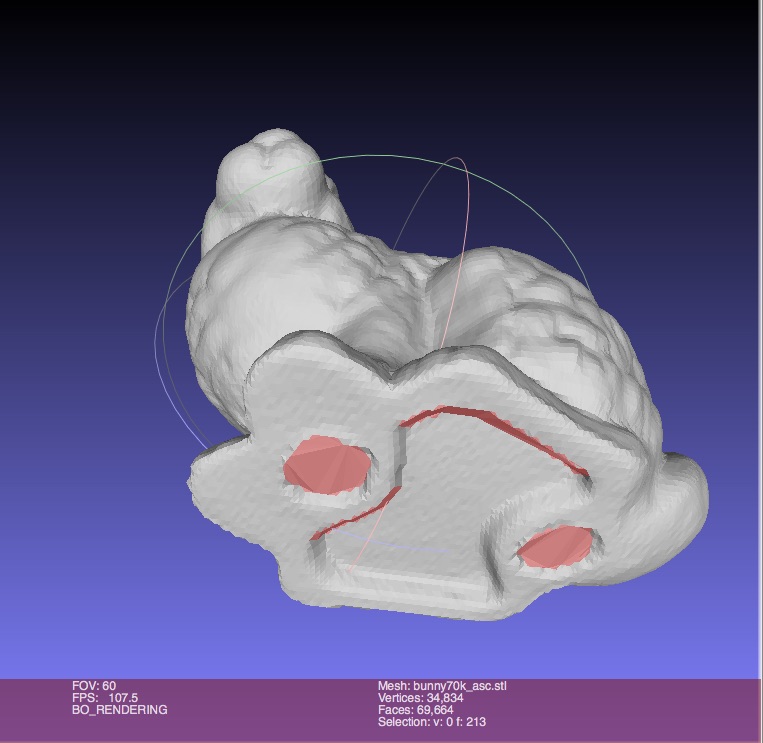 Cleaning 3D Models MeshLab offers a series of automatic, semi-manual and interactive filters to remove those geometric element generally considered “wrong” by most software and algorithms. It is possible to removing topological errors, duplicated and unreferenced vertices, small components, degenerated or intersecting faces, and many more geometrical and topological singularities. Using different automatic and interactive selection methods, is then possible to isolate and remove unwanted areas of your meshes and point clouds. 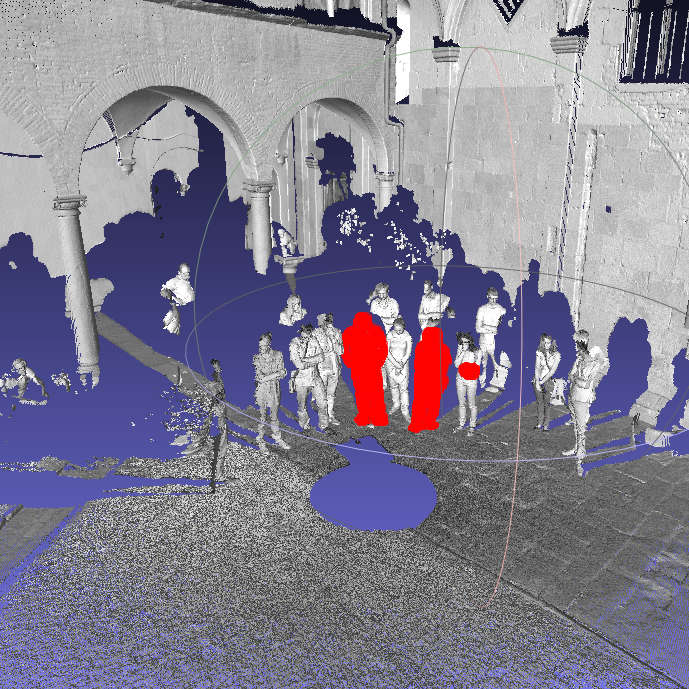 Comparing Models Measuring the geometric difference between two 3D models using Hausdorff Distance is a common approach in mesh processing. Many years ago (in 1997!), the Visual Computing Lab developed and freely distributed what become the standard tool for such task, Metro; the related paper has been cited more than one thousand times. While the original Metro tool was a small open source standalone command line program (still available at our web site), MeshLab offers now much more advanced functionalities for comparing two meshes, that also compute signed distance and may work on point clouds.  Scaling, Positioning and Orienting 3D models, especially coming from survey and scanning, often need to be re-oriented, or placed in a specific reference system; additionally, if they have been generated from 3d-from-photos, they generally need scaling to become metric. MeshLab provides a variety of features to manipulate the scale, positioning and orientation of a 3D model, including basic transformation operations like translation/scaling/rotation, automatic re-centering and alignment to axis, geo-referencing with reference points, interactive manipulators for rotation/translation/scaling, and many others.  3D Models Conversion and Interchange MeshLab can import and export a number of different 3D data formats and to online services like SketchFab. In this way it is possible for the user to interchange data with other tools (including Blender, Photoscan, VisualSfM, Cloud Compare, Autodesk tools), working in the context of complex 3D processing pipelines in a number of different contexts and applications. The scripting functionalities will make this type of use even easier and unattended. 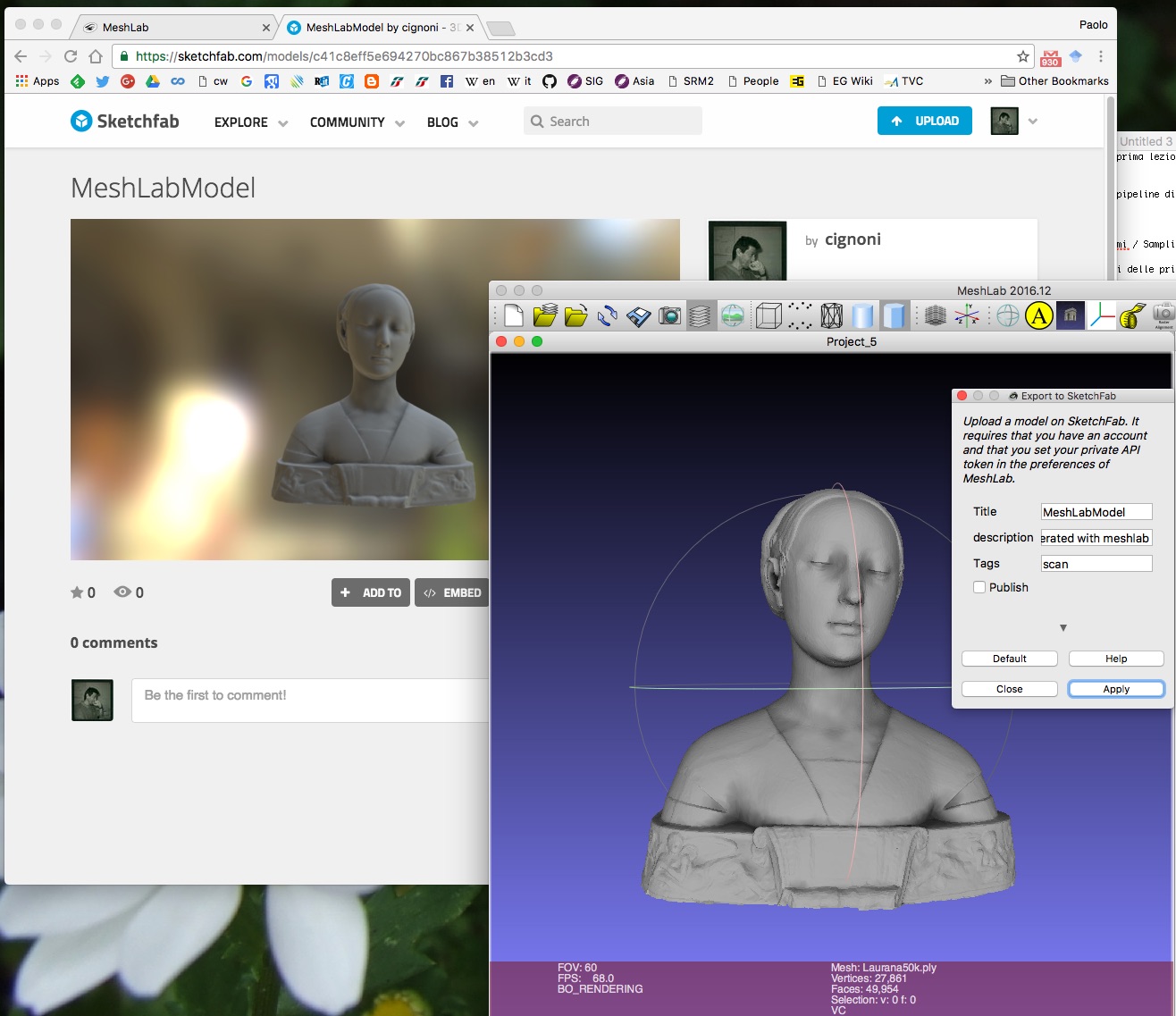 Simplification, Refinement and Remeshing A common need when processing a 3D model is to reduce its geometric complexity, creating a geometry with the same shape but with less triangles (or points). MeshLab offers different ways to simplify (decimate) triangulated surfaces, able to preserve geometrical detail and texture mapping, or to selectively reduce the number of points in a pointcloud. In other cases, the user may want to increase the number of triangles (or points): MeshLab also provides different subdivision schemes, remeshing and resampling filters to increase geometric complexity of 3D models, or to optimize point distribution and triangulation quality.  Raster Layers: Integration with Images Raster Layers have been introduced in MeshLab to allow to go beyond the standard 3D model. MeshLab users can import in a project also images and other 2D entities. These Raster Layers can be used not only to project color information on the 3D model, but also to generate peculiar points of view, or store an entire 3d-from-image acquisition procedure by including also the images used for the generation of the final results. 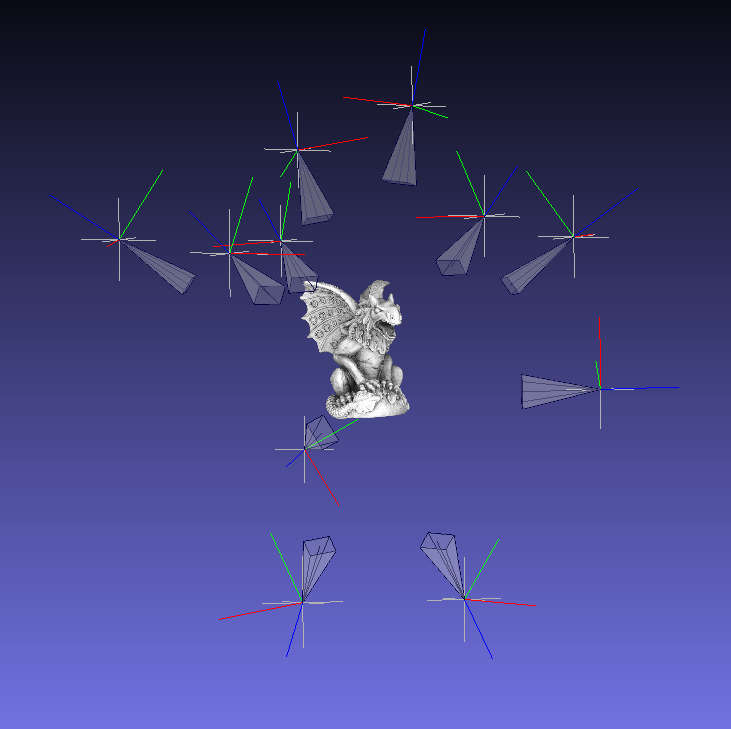 Measurement, and Analysis Interactive point-to-point measurement of a 3D model is really easy in MeshLab. Moreover, automatic filters will return various geometric and topological information about your 3D model (or just of a selected area), while the Sectioning tool can export cut-through sections of a mesh as polylines. Different geometric information (like curvature, geodesic distance, or local vertex density) may be calculated on meshes and 3D models using automatic filters.  Tutorial Videos: Basics Features 3D Scanning pipeline Cleaning This download is for the Windows 64bit version. If you need the MacOS version, download here. If you need the Linux version, download here. If you need Sample Meshes, download here. MeshLab 2020.07 released 06/07/2020 Changes: new plugin "Global Registration" based on OpenGR library; option to reverse wheel direction; snap package allows to associate file extensions and to open files on external disks; u3d exporter is now more stable and works on every platform; removed support for XML plugins and QtScript dependecy; VisualSFM (and some other formats) output *.nvm, *.rd.out projects supported by meshlabserver various bugfixes Click here to visit the author's website. Continue below for the main download link. |
||||||||
| Downloads | Views | Developer | Last Update | Version | Size | Type | Rank | |
| 3,237 | 5,970 | Visual Computing Lab ISTI-CNR <img src="https://www.oldergeeks.com/downloads/gallery/thumbs/MeshLab4_th.png"border="0"> | Oct 11, 2020 - 12:28 | 2020.07 | 51.8MB | EXE |  , out of 46 Votes. , out of 46 Votes. |
|
| File Tags | ||||||||
| v2020.07 MeshLab | ||||||||
|
Click to Rate File Share it on Twitter → Tweet
|